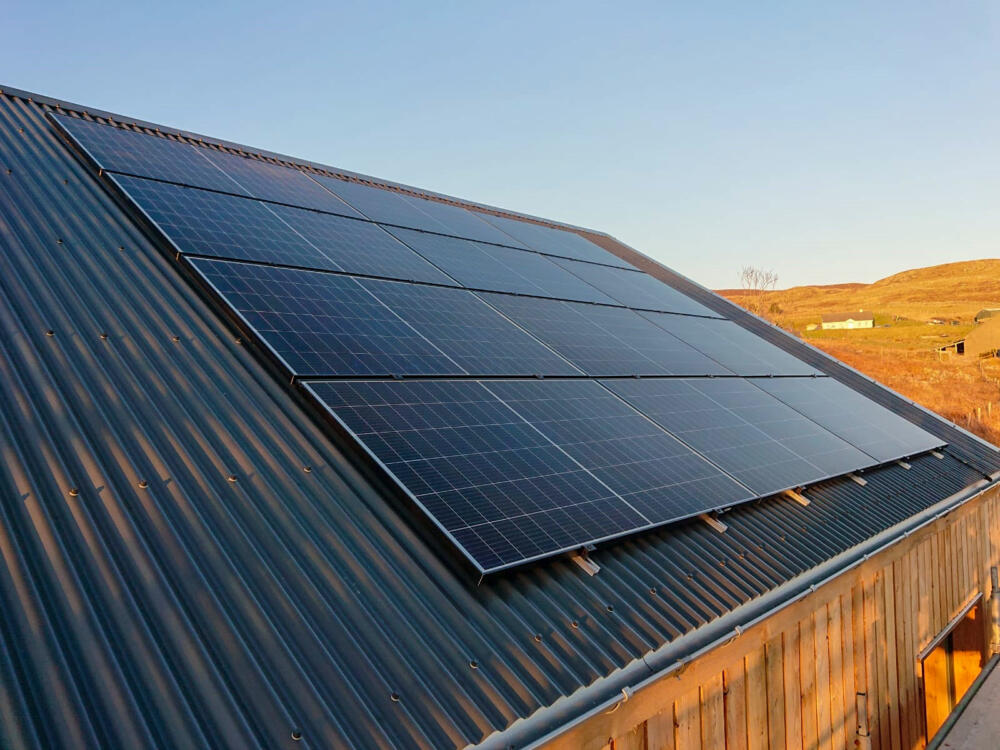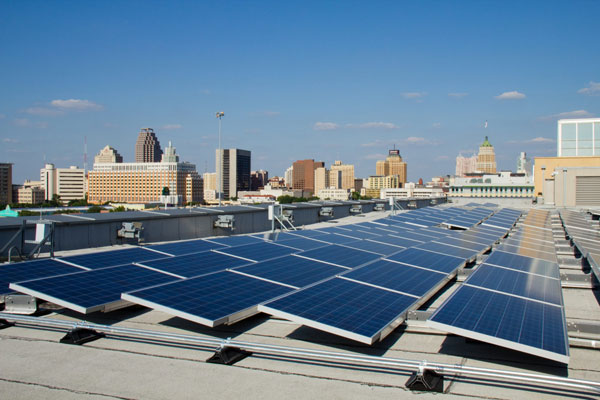Trends In Residential Solar Uptake
The adoption of residential solar is on the rise both due to environmental concerns and economic incentives. A significant factor behind this increase is the drastic reduction in the cost of solar panels, as well as improvements in technology. In the United States, costs of residential installations have fallen by over 70% in the last decade, making it far more feasible for homeowners.
Economic Drivers of Solar Adoption
Reductions in costs are an essential factor that leads to their adoption. Economic incentives, such as tax credits, rebates, net metering, have a great impact on the decisions of homeowners. The Investment Tax Credit (ITC), homeowners may claim a deduction of 26% of the cost of the solar system from their federal tax. These advantages have a substantial impact on the attractiveness of installing solar panels for residential property owners.
Technological Advancements in Solar Panels
The efficiency of solar panels has increased significantly. Modern solar panels are capable of converting over 22% of the sunlight they absorb into electricity instead of just 15% as it was the case a decade ago. The employment of bifacial panels, which absorb the sunlight from two sides, boosts energy production even further.
Environmental Impact and Awareness
Growing public concern about the environment and climate change drives the solar energy movement. More and more homeowners appreciate the ability of solar power to reduce carbon footprints. Multifamily housing developments increasingly include solar panels as a part of their standard design. Builders and buyers both demonstrate greater interest in environmental practices and such developments result in larger numbers of installations.
California’s Solar Initiative
California’s mandate to require all new homes to include solar panels starting from 2020 is a leading example of such regulations. This initiative had a significant impact on the prevalence of solar in new constructions. Moreover, new rules of this sort implemented in the state often serve as a role model for other states if they seek to increase the number of residential installations.
Future of Solar Energy in Residential Areas
The development of residential solar seems optimistic due to constant innovations and increasing government support. The improvements in solar technology, as well as the presence of incentives, ensure the constant increase of its prevalence. Moreover, the presence of home energy storage options, which are becoming increasingly viable to use in conjunction with solar power, allows the increasing level of independence from municipal utilities.
Commercial and Industrial Solar Expansions
The production and development of large-scale solar projects are being actively integrated into the energy strategies of commercial and industrial companies. The primary drivers are the urgent need to cut operational costs and stay in the profit, worldwide, and across all sectors. Here is how business uses solar:
- Businesses leverage the sun to charge less. The most common reason is that companies benefit from solar energy, which allows them to reduce their electricity bills. In 2022, the retail chain in the US recorded a 30 percent fall in power bills in its 50 percent of its solar-roofed locations. They save not only on reduced operational costs but also on the increased efficiency of their operations.
- Rich benefits from policies. Political and financial incentives and efforts are fostering increased growth of solar energy in the commercial area. A variety of tax breaks and loans are provided in many regions paving the way for other countries to leverage solar energy. In Germany, industrial roof owners can benefit from feed-in tariffs supported by the state to avoid the costs of electricity from solar companies. Excise tax-free periods from the electricity tax also significantly cut solar power expenditures. This measure survived until 2023 and was the primary reason behind industry solarization reaching record levels in the past two decades.
- Meeting environmental objectives. Companies today adopt sustainable energy to reduce the greenhouse effects and improve their public image. A global manufacturer of beverages has set a target to boost the delivery of 100 comments across all of its factories to 100% renewable energy in 2025. The company’s delivery driven by photovoltaic technology development supports the recycling targets but puts corporate brand names at a benefit to the general public.
- Technologies combining modern and advanced software with solution. Combined with solar energy, intelligent power supply systems are introduced in the industry. There is genuine follow-up and optimal luding for the software we run in daily contact and, more often than not, in larger scales in the industry. To make this possible, solar panels were built alongside energy storage systems in the technology manufacturer’s PV plants. It allows people to keep their energy in the event of cyber-utilities and other regular production of cycles for production.
The impactful operations of many other examples demonstrate that the first example has a wide range of perspectives, with technology being a total package for separate systems with limited land. The data center in Singapore was one of the largest corporate photovoltaic projects throughout this area with 11 megawatts of electricity.

Innovations in Solar Financing
Innovative financing models contribute to expanding solar energy all over the world. They make solar installations attractive for a wider range of users, from homeowners to large corporations. Among such models, solar leases and PPAs revolutionize the way consumers can access solar energy, with no need for any initial investment. Local bonds issued more often today include green bonds and solar bonds, which supply capital to bigger solar projects and allow even small investors to make a contribution to the development of renewable energy and receive a return on investment.
Crowdfunding platforms are entirely new opportunities for small investors to take part in the financing of solar projects, which are often located in the most disadvantaged areas. Governments worldwide offer subsidized loans and various incentives to their citizens and companies and thereby initiate the process of solar adoption at the low initial investment. Innovative insurance ideas, such as insurance for solar panels, cover different risks, from their damage to the failure to produce energy. In this way, such products mitigate investors’ risks and foster the formation of huge, high-risk solar projects. As for the prospective of the use of blockchain in this area, we can say that some ideas are already exercised, as the platform insures damage to solar panels or interruptions in their work.
For my work, I would choose the case on the use of blockchain for the efficient financing of solar installations. Many companies have already exercised this idea by selling insurance products related to the use of solar installations. These products covered every risk, from damage to solar panels to their underperformance as compared to the expected level of energy production. Most commonly, the products targeted the disadvantages often used to prevent investment in such projects. The insurance covered such cases as damage to solar panels during floods, hurricanes, etc. Some companies even offered payback coverage.
After the installation and future damage to the panels, they would pay their owners the difference with the payback – that is, if the damage had not been done, they would have to profit on this difference. Many deficiencies of such ideas will be easily eliminated in the future. For instance, insurance offers for the most vulnerable cases will even contract the use of blockchain.
Policy Driven Growth in Emerging Markets
The most important impetus of the development of solar energy in emerging markets is government policies. They are designed to adapt to challenges and opportunities on the ground, providing fast and sustainable solutions on a national level.
National Renewable Energy Plans
Multiple emerging markets have introduced national plans designed to explain how solar energy will be used. One of the most prominent examples is India’s National Solar Mission, which is designed to meet the guarantee of 100 GW of solar capacity by 2022. It is one of the most ambitious policies. It created an influx of investment into solar infrastructure in India, generating technological advancement and cost efficiency.
Feed-in Tariffs and Subsidies
Feed-in tariffs and subsidies are efficient methods of supporting the establishment of solar sites. It implies that the government guarantees and sets a price for the electricity produced with solar panels at a premium rate to normal prices. This tool makes solar investments more attractive to investors. In Brazil, FITs were introduced in the last five years, leading to an expansive use of solar photovoltaics.
Customized Financial Instruments
Emerging markets are introducing specialized financial instruments, such as the Renewable Energy Independent Power Producer Procurement Programme in South Africa. It is one of the most efficient ways to promote solar power as it is designed to help finance solar projects. South Africa has integrated multiple large-scale solar plants into their energy mix.
Capacity Building and Technical Support
Capacity building was vital in the expansion of solar installation in emerging markets. Solar panels and solar parks have to be maintained and repaired, requiring a general skill level seen as the required knowledge in the local environment. The government is actively collaborating with international institutions to provide education and training to local engineers and technicians. An example would be Kenya, where the authority paid for the training of 600 people, guaranteeing the success of its solar programme.
Regional Cooperation on Solar Technology
The development of regional cooperation in emerging markets significantly enhanced the adaption and scalability of solar technologies. An example would be the establishment of Southeast Asia solar power alliances. They build vast solar parks beyond the reach of any individual country, meaning that regional cooperation allows for larger, more effective parks by spreading costs and experience. Regional development banks provide necessary funding and policy support.
The Impact of Rural Electrification Policies
Rural electrification has a lasting impact on the situation in various emerging markets. Many countries successfully provide off-grid solar solutions in remote areas, such as Indonesia. It results in the significant improvement of the quality of life and increased economic opportunities for people living in rural areas. Recognizing the inefficiency of government institutions, NGOs such as Grameen Shakti actively participate in the provision of rural electrification arrangements.

Advances in Solar Technology and Infrastructure
The solar industry is experiencing perspectives of rapidly developing the technology and infrastructure, which boosts efficiency and scales the deployment process. It allows introducing solar energy for more uses and implementing them all over the world.
High-efficiency solar panels
Efficiency is one of the critical issues that concern solar panels. Modern technologies helped overcome old limitations and created numerous ways to drive higher efficiency. The perovskite solar cell was one of the breakthrough technologies, which allowed boosting the efficiency rate above 25%, and now numerous companies, such as Oxford PV, are working on developing the technology to increase the number of useful applications. It can also be an alternative technology that provides several benefits, including thickness lower than silicon solar cells, flexibility, and cost-effectiveness.
Solar storage solutions
It is one of the ways to resolve one of the traditional problems concerning solar energy – various lengths of usage and the lack of necessary power. Due to the modern development of lithium-ion batteries, it is possible to store the energy produced during the day to use it at night. One of the most notable examples of this technology is a Tesla Powerwall, which allows for personal use in a house.
Building integrated photovoltaics
Building-integrated photovoltaics changed traditional models with standard solar panels and added new solutions by adding solar cells to building elements, such as windows or facades, which does the same function but differently both from an aesthetic and practical viewpoint. A building in Amsterdam, the Edge, uses BIPV technology with solar panels on facades and windows that can produce about 60% of the energy in the building.
Automated solar farms
The technology of solar trackers is a unique invention that automatically moves panels to improve the efficiency of the sun exposure. Compared to the static solar panel, the efficiency increases by 25%. Numerous companies are already using this technology, such as NEXTracker.
Floating solar systems
Installation of solar panels on water is another innovative solution that may assist in the lack of land to deploy solar panels or issues with land costs. China’s biggest solar farm covers 140 soccer fields and saves much water from evaporation and efficiently produces electricity.
Smart grids
Smart grids are automated grids that analyze real-time data to deal with the problem of solar energy with high variations of power. It is a solution that helps to maintain stability regarding electricity flow by delivering excess electricity over the long distances and energy delivery at peak.





